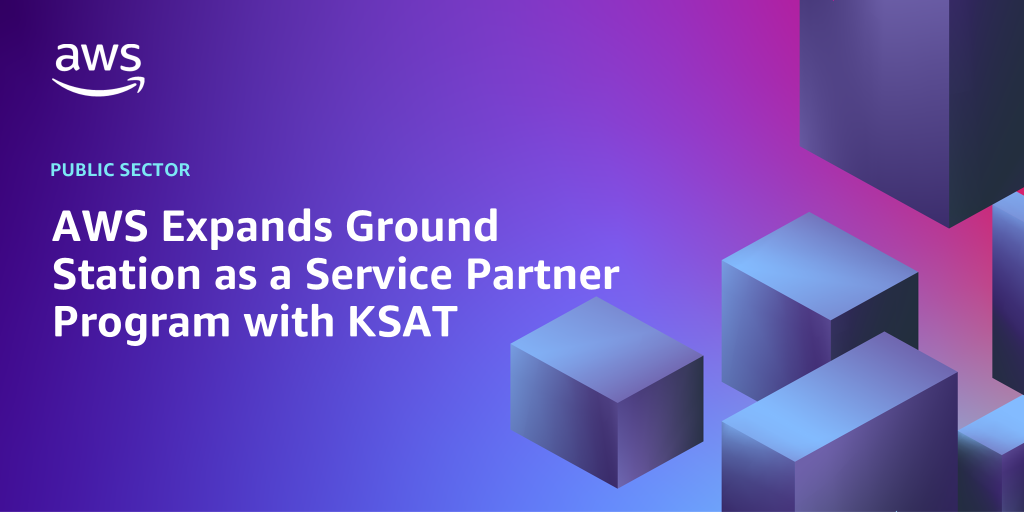AWS Public Sector Blog
Category: AWS Ground Station
Extending operational ground networks for in-orbit satellites
This post showcases how Low Earth Orbit (LEO) satellite operators can seamlessly scale their operational ground network—even with an already in-orbit satellite—with Skynopy’s virtualized ground network, powered by AWS.
AWS Expands Ground Station as a Service Partner Program with KSAT
AWS is expanding its AWS Ground Station as a Service Partner Program, increasing the options for space customers to bring space data to the AWS Cloud and realize its benefits. Today, AWS is excited to announce an enhanced collaboration with Kongsberg Satellite Services (KSAT), a world-leading provider of communication services for spacecraft and launch vehicles, as part of the AWS Ground Station as a Service (GSaaS) Partner Program. Satellite operators can now seamlessly access KSAT’s global satellite ground station network and operation services as well as the services and tools of AWS—the most comprehensive and broadly adopted cloud.
Strengthen federal space resilience with AWS Ground Station
In this post, we explore how AWS Ground Station public sector organizations with on-demand access to AWS-managed antennas that are available as shared or dedicated resources, scaling to the unique requirements of the mission. By adding resource capacity and redundancy with AWS-managed antenna systems, government customers can rapidly increase, differentiate, and distribute their ground segment capabilities. This enables a more flexible and resilient space architecture that can dynamically adapt to changing mission demands.
Test and integrate ground segment with AWS Ground Station digital twin
Amazon Web Services (AWS) customers building software-defined ground segment solutions with the AWS Ground Station now have more confidence in their solution: they can integrate their DevOps practices with AWS Ground Station’s digital twin feature, which became generally available in August. The digital twin is useful for both aspiring and existing AWS Ground Station customers to achieve faster outcomes without applying for satellite licensing and more cost-effectively than scheduling a production satellite contact. Read this post to learn more.
Simplify satellite contact reporting with the AWS Ground Station contacts dashboard
This post shows how Amazon Web Services (AWS) Ground Station customers can start using the Contacts dashboard for AWS Ground Station solution to fulfill their AWS Ground Station reporting and tracking needs. This solution automatically maps AWS Ground Station contacts to their associated costs and provides a feature-rich dashboard reporting capability.
Using customer-provided ephemerides with AWS Ground Station
Amazon Web Services (AWS) Ground Station is a cloud-based service that provides you with an opportunity to perform communication sessions with your satellite without spending a fortune on your own ground station infrastructure. AWS Ground Station balances between providing a ready-made solution and tailoring the service to meet the unique needs of each customer. One of the ways to customize the service is to use customer-provided ephemerides (CPE) for antenna targeting.
How to migrate to the new AWS Ground Station Agent launching March 28
On March 28, Amazon Web Services (AWS) will release a new version of the AWS Ground Station Agent (agent), which is not compatible with past agent releases. In order to maintain operational continuity of Ground Station environments, agent users must follow the instructions provided in this blog post before upgrading to the March 28 version of the agent.
Creating AWS CloudFormation templates for AWS Ground Station DigIF workloads
Amazon Web Services (AWS) Ground Station has many different parameters and options to choose from when creating a contact and setting up data delivery. For this reason, it is advised that infrastructure as code (IaC) is used. This post is the first of a two-part tutorial that provides an overview of the resources required to create AWS CloudFormation templates for Digital Intermediate Frequency (DigIF) workloads, using AWS Ground Station to transmit data between the satellite and AWS Cloud environment.
Building high-throughput satellite data downlink architectures with AWS Ground Station WideBand DigIF and Amphinicy Blink SDR
This blog summarizes some of the benefits of cloud-based ground segment architectures, and demonstrates how users can build a proof-of-concept using AWS Ground Station’s capability to transport and deliver Wideband Digital Intermediate Frequency (DigIF) data, along with the software-defined radio Blink, built by the AWS Partner Amphinicy.
How Satellogic and AWS are harnessing the power of space and cloud
Satellogic is a leader in high-resolution Earth observation (EO) data collection. The company is creating a live catalog of Earth and delivering daily updates to create a complete picture of changes to our planet for decision makers. Watch a new video to understand how Satellogic uses AWS Ground Station and the AWS Cloud to democratize access to EO data that’s being used for high-impact missions.









